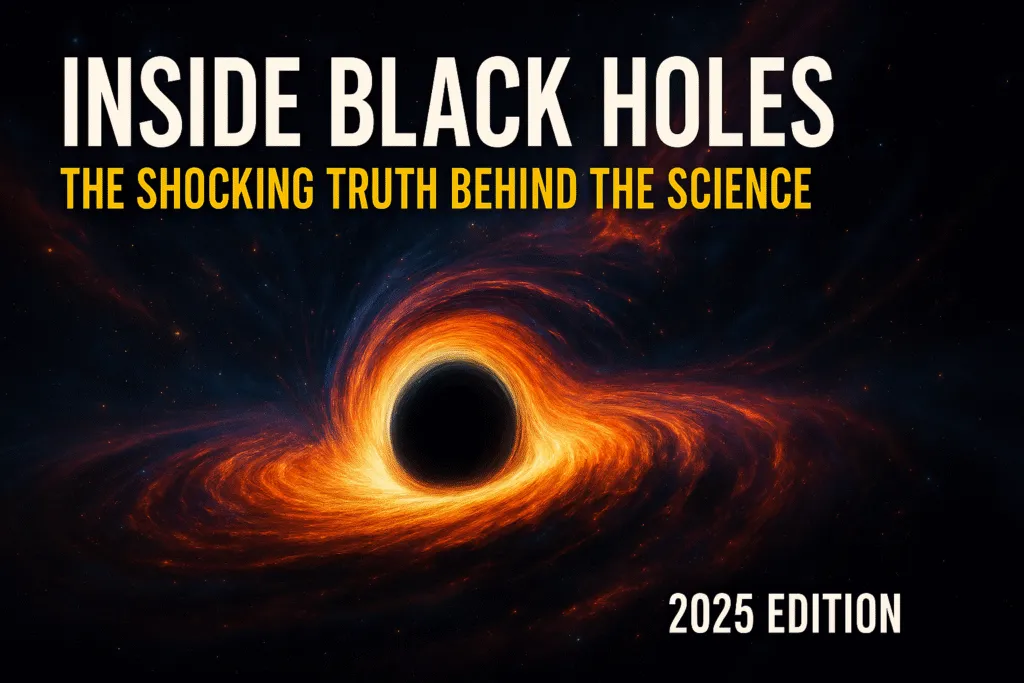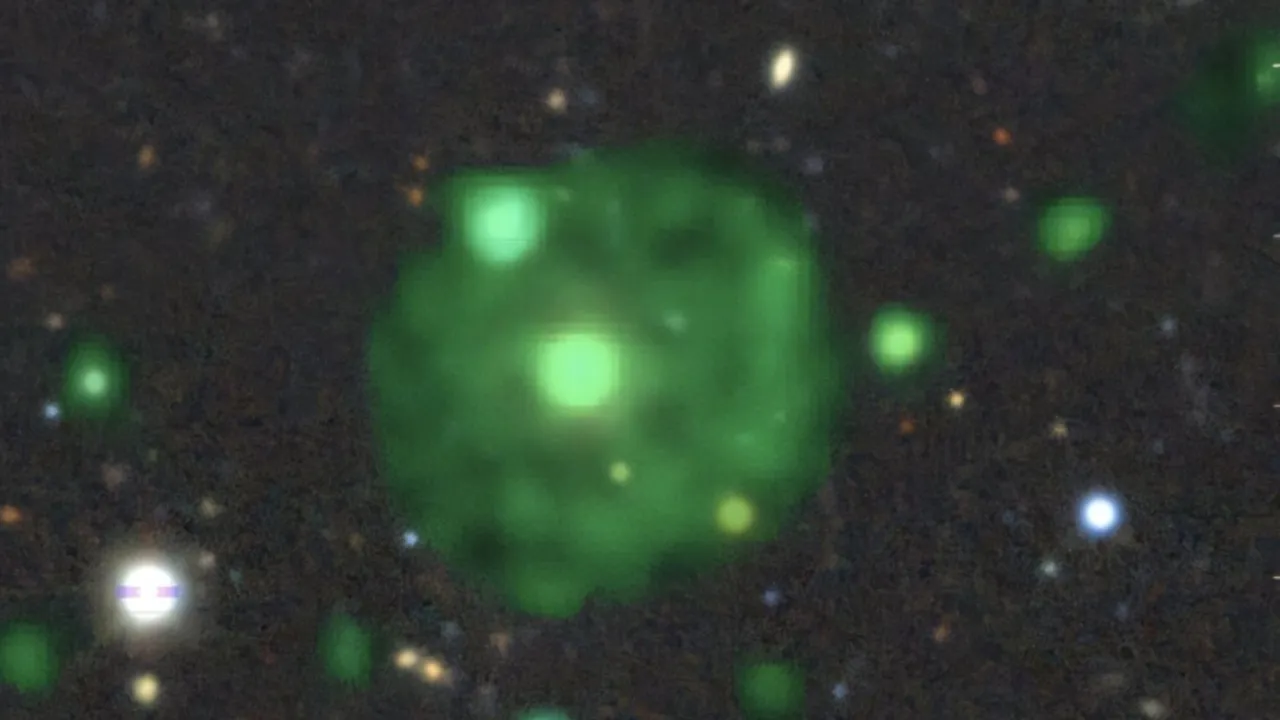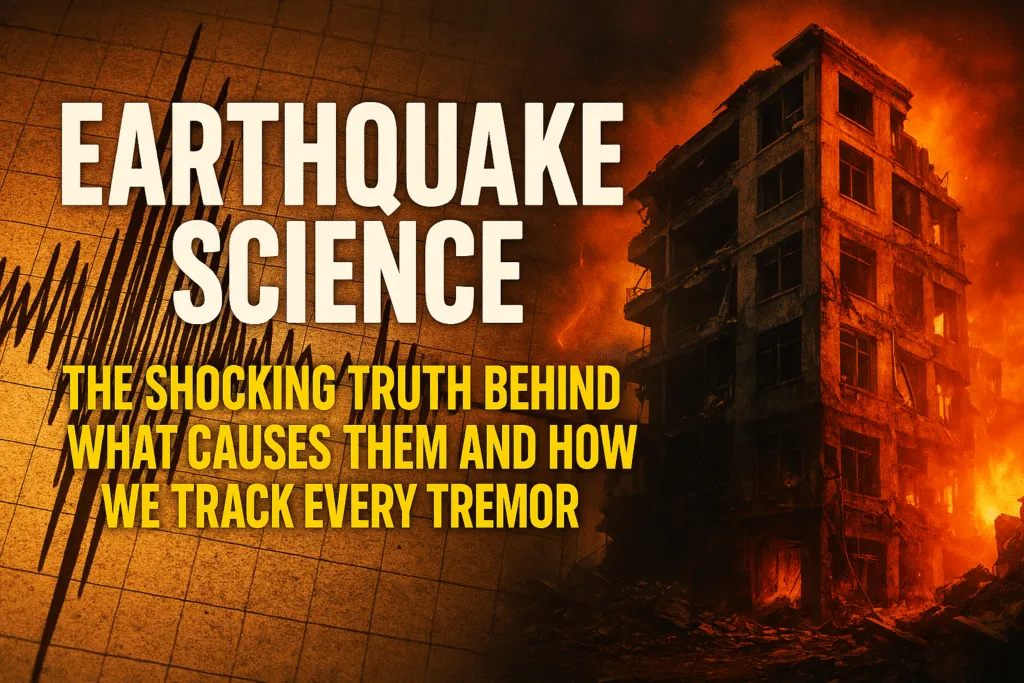What Is a Black Hole? Basic Definition
A black hole is one of the most mysterious objects in the universe. It is a region in space where gravity is so strong that nothing can escape, not even light. Black holes form when massive stars collapse under their own gravity at the end of their life.
The center of a black hole contains a point called a singularity, where matter is incredibly dense. Surrounding it is the event horizon, the boundary beyond which nothing can return. This makes black holes invisible, as no light escapes from them.
Although we cannot see black holes directly, scientists detect them by observing their effect on nearby stars and gas. For instance, if a star moves in an unusual orbit around an invisible object, it may indicate the presence of a black hole.
Studying black holes helps us understand extreme gravity, space, and the behavior of matter under intense conditions. With modern telescopes and instruments, researchers continue to uncover their secrets, making black holes one of the most fascinating topics in astrophysics today.
How Do Black Holes Form? (Stellar Collapse Explained)
Black holes form from the remnants of massive stars after they reach the end of their life cycle. When a star runs out of nuclear fuel, it can no longer support itself against the pull of its own gravity. This imbalance causes the star to collapse inward, compressing its core into an extremely dense point.
The collapse is often accompanied by a supernova, a powerful explosion that blasts the outer layers of the star into space. What remains at the center is the black hole, an object with gravity so intense that not even light can escape. The size and type of the resulting black hole depend on the original star’s mass.
Smaller stars typically form neutron stars instead, while stars much larger than our Sun can create stellar-mass black holes. In some cases, black holes can grow over time by pulling in gas, dust, and even other stars from their surroundings.
The formation of a black hole illustrates the extreme effects of gravity and how matter behaves under intense pressure. Scientists study these processes to better understand the life cycles of stars, the structure of our galaxy, and the physics of spacetime.
Even though black holes may seem like purely theoretical objects, modern astronomy has confirmed their existence through indirect observation. By monitoring high-energy radiation, gravitational waves, and the motion of nearby stars, astronomers can detect where black holes are forming and how they evolve.
Understanding how black holes form not only helps explain the fate of massive stars but also reveals more about the fundamental laws of the universe. These cosmic phenomena continue to fascinate scientists and enthusiasts, providing insight into some of the most extreme environments in space.
Event Horizon – The Point of No Return
The event horizon is one of the most intriguing features of a black hole. It is often described as the boundary around a black hole beyond which nothing can escape, not even light. Once any object crosses this invisible line, it is inevitably drawn toward the black hole’s singularity at the center.
Think of the event horizon as a point of no return. Outside this boundary, gravity is extremely strong but manageable. Inside, the pull becomes so intense that escape is impossible. This is why black holes appear completely dark to observers, as light cannot leave the event horizon to reach our telescopes.
The size of the event horizon depends on the mass of the black hole. Larger black holes have wider event horizons, while smaller ones have a more compact boundary. For stellar-mass black holes, the event horizon may only span a few kilometers, whereas supermassive black holes at the center of galaxies can have event horizons millions of kilometers wide.
Although we cannot see the event horizon directly, astronomers can detect its presence by observing nearby stars and gas. Material falling toward the black hole heats up and emits X-rays and other radiation, giving clues about the location of the event horizon.
Understanding the event horizon helps scientists explore fundamental questions in physics, including how gravity works under extreme conditions and how space and time behave near a black hole. Studying this mysterious boundary also provides insight into phenomena like Hawking radiation and the limits of our current understanding of the universe.
The concept of the event horizon continues to captivate astronomers and space enthusiasts, highlighting the fascinating and extreme nature of black holes in the cosmos.
Singularity – What Exists at the Center?
At the very center of a black hole lies the singularity, one of the most mysterious and extreme regions in the universe. The singularity is a point where matter is compressed to infinite density, and gravity becomes infinitely strong. At this location, the known laws of physics, including space and time, break down.
The singularity forms when a massive star collapses under its own gravity at the end of its life. While the event horizon marks the boundary of a black hole, the singularity is the core where all the mass of the star is concentrated. This extreme concentration of matter creates a gravitational pull so intense that nothing can escape, not even light.
Because the singularity is hidden behind the event horizon, we cannot observe it directly. Scientists rely on mathematical models and theoretical physics to understand its properties. General relativity predicts the existence of singularities, but it cannot fully describe what happens at that point. Quantum mechanics may hold some answers, but reconciling it with gravity remains one of the biggest challenges in modern physics.
The study of singularities is not just about understanding black holes. It also offers insight into the fundamental nature of the universe, the behavior of matter under extreme conditions, and the limits of space and time. Some theories suggest that singularities might connect to other regions of the universe or even other universes, though these ideas remain speculative.
Singularities highlight how black holes push the boundaries of our knowledge. They are a reminder that the universe still holds many secrets, and studying them can reveal profound truths about gravity, spacetime, and the origins of the cosmos.
Types of Black Holes (Stellar, Supermassive, Intermediate & Mini)
Black holes are not all the same. They come in different types based on their mass and size, each with unique characteristics and formation processes. Understanding the types of black holes helps us explore how these cosmic objects shape the universe.
Stellar black holes are the most common type. They form when massive stars collapse at the end of their life cycle. Typically, stellar black holes have a mass ranging from a few to tens of times that of our Sun. They are often detected by observing X-rays emitted from the hot gas surrounding them.
Supermassive black holes are much larger and reside at the centers of galaxies, including our Milky Way. These black holes can have millions or even billions of times the mass of the Sun. Their formation is still not fully understood, but they play a crucial role in regulating galaxy formation and evolution.
Intermediate black holes fall between stellar and supermassive black holes in terms of mass. These are rarer and harder to detect, but astronomers believe they may form from the merging of smaller black holes or dense star clusters.
Mini black holes, also called primordial black holes, are hypothetical small black holes that could have formed in the early universe. Unlike stellar and supermassive black holes, they may have very low mass and are still purely theoretical, though scientists are exploring ways to detect them.
Studying the different types of black holes provides insight into how matter and gravity behave under extreme conditions. It also helps astronomers understand galaxy formation, cosmic evolution, and the ultimate fate of massive stars. Each type of black hole reveals a unique aspect of the universe’s most powerful and mysterious forces.
How Black Holes Affect Space and Time (Gravity and Spacetime Curvature)
Black holes are not just objects with extreme gravity—they actually warp the fabric of space and time around them. According to Einstein’s theory of general relativity, massive objects like black holes curve spacetime, creating effects that seem almost otherworldly.
The gravitational pull of a black hole is so intense that it bends the path of nearby objects and even light. This warping of spacetime means that time itself behaves differently near a black hole. For an observer far away, time appears to slow down for anything approaching the black hole, a phenomenon known as gravitational time dilation.
Space itself is also distorted around a black hole. The strong curvature can stretch and compress matter, causing tidal forces that can tear apart stars or planets that get too close. These extreme forces make the environment near a black hole one of the most hostile in the universe.
Even though we cannot see inside a black hole, scientists can study its effects on surrounding matter and light to understand how it shapes spacetime. Observing the motion of stars, gas clouds, and gravitational waves helps astronomers measure the strength of the black hole’s gravity and the degree of spacetime curvature.
Understanding how black holes affect space and time provides insight into the fundamental laws of physics. These cosmic phenomena test the limits of general relativity and push scientists to explore the connection between gravity and quantum mechanics. By studying black holes, we gain a deeper appreciation of the strange, fascinating ways the universe operates under extreme conditions.
Can Anything Escape a Black Hole? (Hawking Radiation & Theory)
By definition, nothing can escape a black hole once it crosses the event horizon. The gravitational pull is so strong that even light cannot break free. This is why black holes appear completely dark and invisible in space. However, modern physics offers a fascinating exception through the concept of Hawking radiation.
Proposed by physicist Stephen Hawking in 1974, Hawking radiation suggests that black holes can emit tiny amounts of radiation due to quantum effects near the event horizon. In simple terms, particle-antiparticle pairs constantly pop into existence in empty space. Near the event horizon, one particle may fall into the black hole while the other escapes, effectively allowing the black hole to lose a small amount of mass over time.
This process is extremely slow for large black holes, so the effect is practically undetectable for stellar or supermassive black holes. However, for hypothetical mini black holes, Hawking radiation could play a significant role in their evaporation.
While no matter or light can escape from within the event horizon, Hawking radiation provides a theoretical way for black holes to emit energy. This idea has profound implications for understanding the life cycle of black holes and the ultimate fate of the universe. It also bridges concepts from quantum mechanics and general relativity, showing that black holes are not entirely isolated from the rest of the cosmos.
Studying Hawking radiation continues to challenge physicists and expand our knowledge of black holes. It reveals that even the most extreme objects in the universe may have subtle ways to interact with their surroundings, highlighting the mysterious and fascinating nature of black holes.
How Do Scientists Detect Black Holes? (Telescopes, Gravitational Waves, etc.)
Black holes cannot be seen directly because light cannot escape them. Despite this, scientists have developed several ingenious methods to detect their presence and study their properties. Observing a black hole’s effect on nearby matter is one of the most common approaches.
When a black hole pulls in gas, dust, or even a nearby star, the material accelerates and heats up, emitting X-rays and other forms of high-energy radiation. Space telescopes such as NASA’s Chandra X-ray Observatory and ESA’s XMM-Newton detect these signals, allowing astronomers to infer the presence of a black hole.
Another breakthrough method is the detection of gravitational waves. When two black holes merge, they create ripples in spacetime that travel across the universe. Advanced instruments like LIGO and Virgo can measure these waves, confirming the existence of black holes and providing data on their mass and spin.
In addition, scientists study the motion of stars near invisible regions of space. If a star orbits an area with no visible object, the gravitational influence may indicate a black hole. This method was used to confirm the supermassive black hole at the center of the Milky Way, known as Sagittarius A*.
Recently, the Event Horizon Telescope achieved a historic milestone by capturing the first image of a black hole’s shadow, giving direct visual evidence of these cosmic phenomena.
Through these techniques, scientists can detect and study black holes despite their invisibility. Each observation helps us understand their behavior, influence on surrounding space, and the extreme effects of gravity. Studying black holes continues to expand our knowledge of the universe and pushes the boundaries of modern astrophysics.
Famous Black Holes in Our Universe (Sagittarius A, M87, etc.)*
Some black holes have become famous for their size, influence, or the groundbreaking discoveries associated with them. Studying these black holes helps scientists understand how these extreme objects shape the universe.
Sagittarius A* is the supermassive black hole at the center of our Milky Way galaxy. It has a mass of about four million times that of the Sun and influences the motion of nearby stars. Observations of Sagittarius A* have provided critical insights into the behavior of matter under intense gravity and the dynamics of our galaxy.
Another well-known black hole is M87*, located in the galaxy Messier 87. This supermassive black hole made history in 2019 when the Event Horizon Telescope captured the first-ever image of a black hole’s shadow. With a mass about 6.5 billion times that of the Sun, M87* has helped astronomers test Einstein’s theory of general relativity under extreme conditions.
There are also stellar-mass black holes that have gained attention, such as Cygnus X-1. It is one of the first black holes discovered and continues to be a key object for studying the interactions between black holes and companion stars.
These famous black holes illustrate the diversity and scale of black holes in the universe, from stellar-mass to supermassive giants. Observing them allows scientists to explore gravity, spacetime, and cosmic evolution in ways that were once only theoretical.
Understanding these iconic black holes not only deepens our knowledge of the cosmos but also inspires curiosity and fascination about the extreme and mysterious objects that inhabit space. Black holes like Sagittarius A*, M87*, and Cygnus X-1 continue to captivate both scientists and space enthusiasts worldwide.
Why Black Holes Matter in Modern Astrophysics
Black holes are not just cosmic curiosities—they play a crucial role in modern astrophysics. Studying black holes helps scientists explore extreme conditions of gravity, matter, and energy, offering insights that cannot be gained elsewhere in the universe.
One key reason black holes matter is their impact on surrounding space. Supermassive black holes, like Sagittarius A* in the Milky Way, influence the motion of stars and the formation of galaxies. Understanding these interactions helps astronomers explain how galaxies evolve and why certain cosmic structures exist.
Black holes also serve as natural laboratories for testing fundamental physics. The extreme gravity near a black hole stretches and warps spacetime, allowing scientists to observe phenomena like gravitational time dilation and light bending. These observations test Einstein’s theory of general relativity and push the boundaries of our knowledge.
Additionally, the detection of gravitational waves from black hole mergers has opened a new era in astronomy. These waves provide information about the masses, spins, and dynamics of black holes, offering insights into the life cycle of stars and the history of the universe.
Studying black holes also drives theoretical research. Concepts such as singularities, event horizons, and Hawking radiation challenge our understanding of quantum mechanics and gravity, motivating physicists to develop new models of the universe.
In essence, black holes are central to modern astrophysics because they connect multiple fields—from astronomy to quantum physics. By studying these enigmatic objects, scientists gain a deeper understanding of the universe, from the smallest particles to the largest cosmic structures. Black holes continue to fascinate researchers and enthusiasts alike, making them one of the most important topics in space science today.
Conclusion – Are We in Danger?
Black holes are undoubtedly some of the most powerful and mysterious objects in the universe, but for humans on Earth, they are not an immediate threat. Most black holes are located far away from our solar system, often thousands or millions of light-years distant. The nearest known black holes pose no danger to us because their gravitational pull does not extend that far.
While black holes can consume nearby stars or matter, the likelihood of one coming close to Earth is extremely low. Even the supermassive black hole at the center of our Milky Way, Sagittarius A*, is over 26,000 light-years away, making it harmless to our planet.
Studying black holes is important not because they threaten us, but because they help scientists understand extreme physics, the behavior of matter under immense gravity, and the evolution of galaxies. Observations of black holes, including their event horizons and gravitational waves, have expanded our knowledge of the cosmos and tested theories like Einstein’s general relativity.
Although black holes may sound dangerous in popular media, they are fascinating cosmic phenomena that exist safely far from us. They offer a window into the universe’s most extreme conditions and continue to inspire curiosity and research in astrophysics.
In conclusion, black holes are a source of scientific discovery rather than danger. By studying these mysterious objects, we learn more about gravity, spacetime, and the life cycles of stars. Black holes remain a captivating and essential part of modern astronomy, helping us understand the universe while leaving Earth safely untouched.
Also Read: String Theory: A New Way to Understand the Universe 2025?
FAQs
1. What is a black hole?
A black hole is a region in space where gravity is so strong that nothing, not even light, can escape. It forms when a massive star collapses under its own gravity.
2. How are black holes formed?
Black holes typically form from the collapse of massive stars at the end of their life cycle. Supermassive black holes may also grow by merging with other black holes or absorbing surrounding matter.
3. Can anything escape a black hole?
Nothing can escape a black hole once it crosses the event horizon. However, theoretical concepts like Hawking radiation suggest tiny amounts of energy can be emitted near the black hole.
4. Are black holes dangerous to Earth?
No, black holes are extremely far from Earth, and their gravity does not affect our solar system. The nearest known black holes pose no threat to humans.
5. How do scientists detect black holes?
Scientists detect black holes by observing their effects on nearby stars and gas, X-ray emissions, gravitational waves, and, in some cases, direct imaging of the event horizon.
6. What are the types of black holes?
The main types are stellar black holes, supermassive black holes, intermediate black holes, and hypothetical mini or primordial black holes.
7. Why are black holes important in astrophysics?
Black holes help scientists study extreme gravity, spacetime, galaxy formation, and test fundamental physics theories like general relativity and quantum mechanics.













